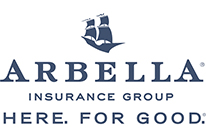
While the property crime rate (car theft and burglary) in Massachusetts has always been considerably lower than the national rate, Leslie Williams still felt she needed comprehensive auto insurance coverage in Holyoke MA. She lived in Holyoke, Massachusetts, which has the highest per-capita property crime rate in the state, according to a recent FBI report. This city, which has around 40,000 residents, lies between the Mount Tom Range and the Connecticut River.
Comprehensive coverage typically covers the damages from theft, fire, vandalism, falling debris, natural disasters, and animal-caused damages. In a nutshell, this optional type of coverage pays for your car’s repairs or replacement in the event of damages that are not incurred as the result of an auto accident.
Because not all policies are the same, it’s important to make sure that you always read the fine print and compare insurance rates and clauses from different insurers.
Since Williams used her car to commute regularly in places where car theft and vandalism rates were high compared to other cities in Massachusetts, she took the advice of her insurance agent and obtained comprehensive coverage. Leslie’s decision was smart, as she was driving a new, expensive car. After all, the premium rate that comes with comprehensive auto insurance is relatively paltry compared to the extent of protection provided, which appealed to her.
Other situations that may warrant comprehensive coverage might be that you drive a lot of miles, or you often park your car in areas where your vehicle is susceptible to vandalism and theft.
Take note that while this coverage is not state-required, it is almost always a necessity if you’re seeking a car loan or lease agreement. Most insurance companies offer comprehensive auto coverage that goes hand in hand with collision coverage, which covers the cost for car repairs (or even replacement cost) in the event of an accident with another vehicle or a stationary object.
While some insurers do not charge a deductible for glass repair, others do. Read your policy’s fine print or consult with your agent to be certain about what will constitute out-of-pocket expenses. Also, read Could Your Refuse Your Insurer’s Body Shop?.
Aside from comprehensive car insurance coverage, Williams also decided to get uninsured-underinsured motorist protection due to the growing number of uninsured drivers on the road. Currently, the national rate hovers around 13 percent, and experts suggest that that number could even increase in the coming years.
This optional coverage protects you from drivers without insurance (despite the fact that most states require all drivers to carry at least a liability coverage) or those who are underinsured. This specifically covers bodily injuries, property and car damages, loss of income, and funeral costs for policyholders and their passengers.
Ultimately, your car insurance coverage should never be static. In fact, it is ideal to review your policy every year due to changing factors such as the age and value of your vehicle, rate of collision, property crime rates in your area, and your own driving habits.

Mobile Home Insurance: An In-Depth Coverage Guide
If you own a mobile home, several threats could affect your house more severely than a traditional house. For example, many people have heard about the devastation a tornado can cause in mobile home camps.

What Is a Home Insurance Deductible?
5.1% of insured homes in the United States had a home insurance claim in 2019, according to ISO. Nearly all of these claims were due to property damage, including theft, which amounted to 97.2% of claims. The remaining 2.8% of claims were liability losses.

5 Tips for Choosing the Right Home Insurance Companies for You
Homeowners insurance isn't on most people's minds until they experience damages, a disaster, or someone gets injured on their property. Only about 85% of homeowners have insured their homes.




